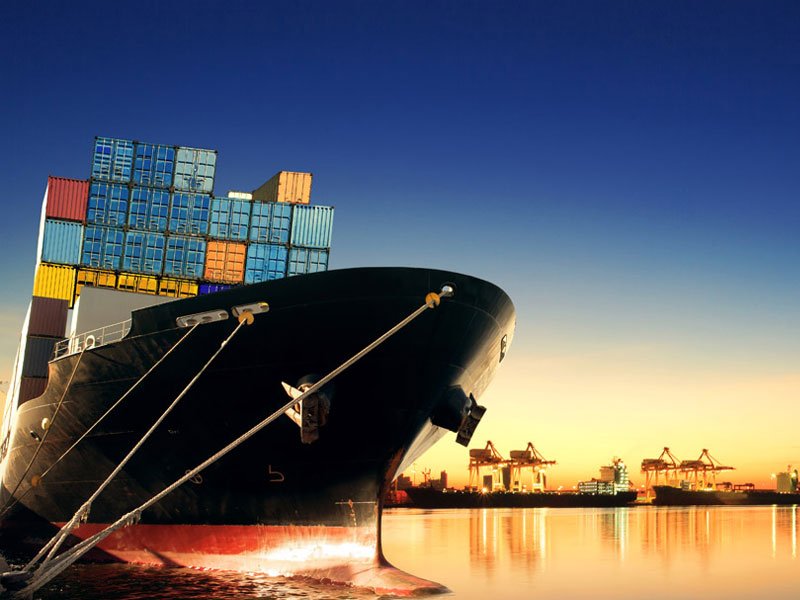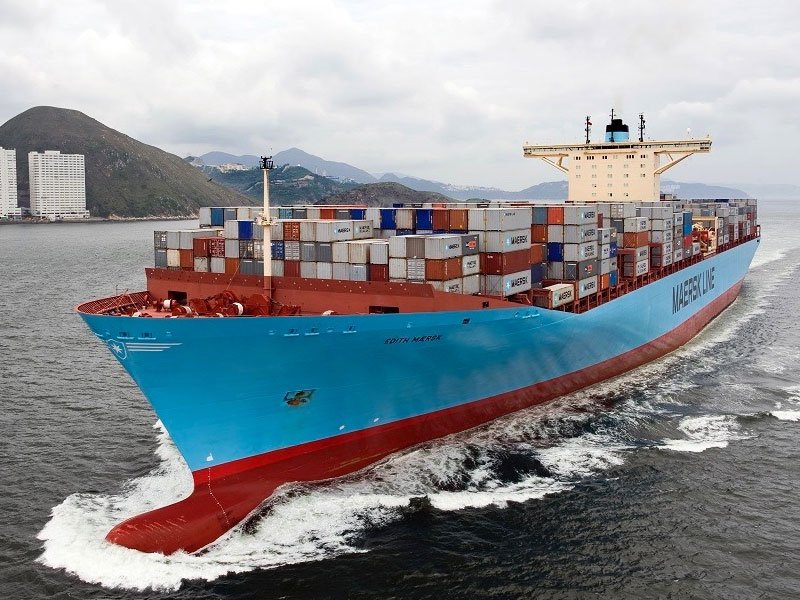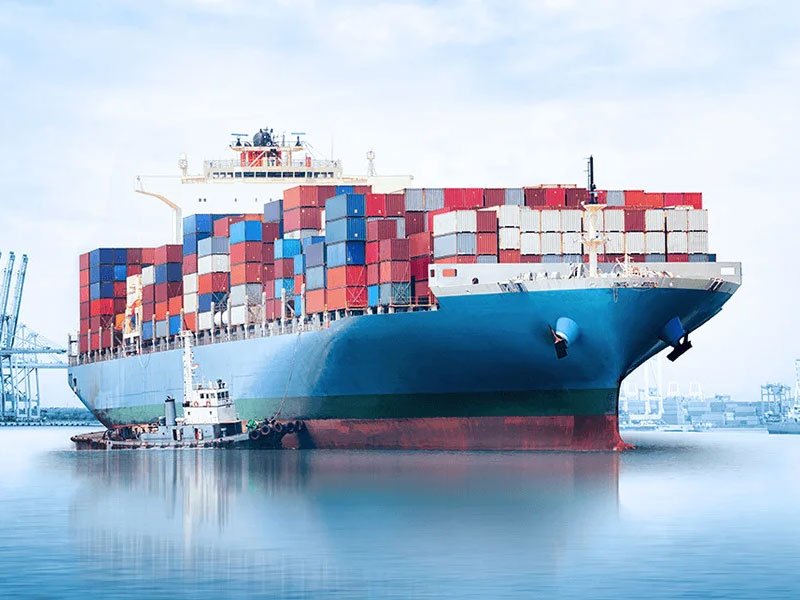
Logistic
Ocean
Freight
It is important to note here that in the vast expanse of international trade, ocean freight forms the backbone, connecting continents and facilitating the movement of goods on a global scale. In this article, we take a deeper look into the world of international ocean freight, exploring its intricacies, challenges, and pivotal role in the global supply chain, all from the perspective of colossal container ships navigating the high seas to the intricate logistics orchestrating each shipment.
In international maritime transport precise organization and execution of top-quality export or import consignments depends on the innovative logistics services of Lianvisman company.
Lianvisman can arrange door-to-door delivery to or from any port or any inland point in any country. Cargo can be moved as a Full Container Load (FCL) or as Less than Container Load (LCL) consolidated with other cargo to make smaller shipments more economical.
Our Experience Your Advantage
- We also have the perfect solution for your airfreight…
- Door to Door Delivery
- Full Container Load (FCL) and Less Than Container Load (LCL) Consolidations
- Breakbulk, Bulk Commodities, over-dimensional Cargo and Project Cargo Handling
- Reefer Container Services
- Advanced tracking and reporting options
- Practical Cost-effective advice on routing, transit times and shipping schedules.
- Cost effective cargo consolidation and optimized container loading.
- Sourcing of carriers, procurement and bidding.
- Packaging of cargoes and warehouse rental .
+8
Countries
+90
Companies
Get The Best Freight
01
Enter Your Contact Details
02
Enter the Shipment Details
03
Our Team Will Contact You Shortly
Get A Free Quote
Enter The Details Below For Our Team So That We Can Reach Out To You For A Free Quote.
The Essence of International Ocean Freight
There is no doubt that the vast network of maritime routes that crisscross the oceans is at the core of global commerce. They are vital for connecting major ports and facilitating the movement of goods between nations, and they form the backbone of global trade. Often viewed as the lifeblood of international trade, international ocean freight involves the transportation of cargo across vast water bodies using specially designed vessels in order to transport cargo across these vast bodies of water.
Containerization and Maritime Giants
Containerization revolutionized the landscape of international ocean freight. Standardized containers, seamlessly transferable between ships, trucks, and trains, streamlined the loading and unloading processes, drastically reducing turnaround times. Today, massive container ships, often referred to as maritime giants, traverse major trade routes, carrying thousands of containers stacked high above the waterline.
Major Maritime Routes
Understanding the major maritime routes is akin to possessing a navigational chart in the vast ocean of international trade. It is not merely an academic exercise; rather, it forms the very foundation of comprehending the intricate dynamics that govern the international ocean freight industry. These maritime arteries, traversing oceans and continents, serve as the lifeblood of global commerce, orchestrating the movement of goods on a monumental scale.
The bustling trans-Pacific trade lanes stand as bustling highways of commerce, connecting the manufacturing powerhouses of Asia to the consumer markets of North America. Container ships, akin to floating warehouses, navigate these busy routes, laden with a diverse array of products ranging from electronics to textiles. The sheer volume of trade conducted along these lanes underscores their significance as key conduits shaping the interconnectedness of economies.
Equally pivotal are the maritime gateways represented by the Suez Canal and Panama Canal routes. The Suez Canal, strategically positioned in Egypt, provides a vital shortcut for vessels traveling between the Mediterranean and Red Seas, enabling more efficient access to Europe, Asia, and beyond. On the other side of the globe, the Panama Canal serves as a maritime crossroads, allowing ships to traverse between the Atlantic and Pacific Oceans. These canals are not just waterways; they are transformative channels that open avenues for global accessibility, influencing trade patterns and economic development.
In essence, the major maritime routes are the threads weaving together the fabric of international commerce. They create interconnected networks that transcend geographical boundaries, enabling the seamless exchange of goods and fostering economic relationships on a global scale. For businesses engaged in international ocean freight, a profound understanding of these routes is akin to having the pulse of the industry, providing insights into trade patterns, shipping volumes, and the strategic considerations that shape the choices made by shipping companies and logistics providers.
As businesses navigate the complexities of global trade, the knowledge of these maritime routes becomes a strategic asset. It guides decisions related to shipping routes, helps optimize supply chain logistics, and informs risk management strategies. Whether contemplating the expanses of the Pacific or the strategic shortcuts offered by canals, the awareness of these routes empowers businesses to chart courses that are not just efficient but strategically aligned with the currents of international commerce.

Weather, Piracy, and Regulatory Seas
While international ocean freight offers unparalleled efficiency and scale, it is not without challenges. Adverse weather conditions, piracy threats in certain regions, and evolving international regulations pose hurdles that demand careful navigation. Industry players continually invest in technology and security measures to mitigate these challenges and ensure the safe passage of cargo.
Reefer Containers and Specialized Solutions
Beyond standard dry containers, international ocean freight has evolved to accommodate specialized cargo. Reefer containers, equipped with temperature control, enable the transport of perishable goods, expanding the possibilities for global trade in products like fruits, vegetables, and pharmaceuticals. Additionally, oversized and heavy cargo is transported using specialized equipment, such as flat racks and open-top containers.
Port Operations and Supply Chain Integration
Port operations play a pivotal role in the orchestration of international ocean freight. Efficient loading and unloading, container storage, and seamless intermodal connections are crucial for a smooth flow of goods. Integrated supply chain solutions further enhance efficiency, providing end-to-end visibility and coordination from the origin to the final destination.
Environmental Considerations
As the global community intensifies its focus on sustainability, the maritime industry is not immune to the call for environmentally friendly practices. From adopting cleaner fuel alternatives to exploring innovative propulsion technologies, international ocean freight is actively seeking ways to reduce its carbon footprint and contribute to a more sustainable future.

Technology Transformations in Ocean Freight
Digitalization is reshaping the landscape of international ocean freight. Advanced tracking systems, blockchain technology for secure documentation, and predictive analytics for route optimization are becoming integral components of modern shipping operations. These technological advancements enhance visibility, transparency, and overall efficiency in the complex world of global trade.
Customs and Compliance in International Ocean Freight
International ocean freight is intricately linked with a web of customs regulations and compliance requirements. This section explores the complexities of customs procedures, documentation essentials, and the importance of adhering to international trade laws. Navigating these regulatory currents ensures a smooth voyage through global waters, avoiding potential pitfalls that may arise at customs checkpoints.
Trade Agreements and Global Supply Chains
Trade agreements play a pivotal role in shaping the landscape of international ocean freight. This part of the article delves into the impact of trade agreements on shipping routes, tariffs, and the formation of global supply chains. Understanding these economic engines provides insight into the evolving dynamics of international trade and how they influence the choices made in ocean freight logistics.
Hubs and Emerging Trends in International Shipping
Ports serve as crucial nodes in the network of international ocean freight. This section explores major shipping hubs worldwide and their strategic significance. Additionally, it sheds light on emerging trends, such as the development of mega-ports and the utilization of smart technologies, influencing the efficiency and capacity of ports in handling the ever-growing volume of global trade.
Risk Management on the High Seas (Insurance and Contingency Planning)
International ocean freight, like any maritime venture, comes with inherent risks. This part discusses the importance of comprehensive insurance coverage for cargo in transit. It also emphasizes the role of contingency planning, addressing potential challenges such as delays, damages, or unforeseen disruptions. A robust risk management strategy ensures resilience in the face of unpredictable events.
Alliances and Partnerships in Ocean Freight
Collaboration is a cornerstone of successful international ocean freight. This section explores shipping alliances and partnerships formed by major carriers to optimize routes, share resources, and enhance operational efficiency. Understanding these collaborative efforts provides insights into the interconnected nature of the shipping industry and how it adapts to the demands of global trade.
Challenges and Opportunities in International Ocean Freight
While international ocean freight opens doors to vast opportunities, it also presents challenges. This part of the article examines the geopolitical factors, economic fluctuations, and unforeseen events that can impact the industry. Navigating the seas of challenges requires resilience, adaptability, and a forward-thinking approach to capitalize on the opportunities that arise in an ever-changing global landscape.
Environmental Initiatives in Maritime Shipping
The call for sustainability echoes across the maritime industry. This section explores the initiatives and innovations aimed at making international ocean freight more environmentally friendly. From the adoption of alternative fuels to the implementation of eco-friendly technologies, the article discusses how the industry is charting a course towards sustainable horizons to minimize its ecological footprint.

Pros and Cons of International Ocean Freight
International ocean freight is a cornerstone of global trade, offering a cost-effective and reliable means of transporting goods across vast distances. While it comes with numerous advantages, it is not without its challenges. In this exploration, we delve into the pros and cons of international ocean freight, shedding light on the complexities and opportunities that come with navigating the seas of global commerce.
Pros of International Ocean Freight
- Cost-Effectiveness:
Advantage: One of the primary benefits of international ocean freight is its cost-effectiveness, especially for large and heavy shipments. The economies of scale associated with transporting a significant volume of goods on massive container ships contribute to lower shipping costs per unit.
- High Capacity and Versatility:
Advantage: Ocean freight vessels, particularly container ships, boast immense capacity for goods of various sizes and types. The versatility to transport both standard and specialized cargo makes it a preferred choice for a wide range of industries.
- Reduced Carbon Footprint:
Advantage: In comparison to air freight, ocean freight generally has a lower carbon footprint. The efficiency of transporting goods in large quantities contributes to lower emissions per unit of cargo, aligning with sustainability goals.
- Global Connectivity:
Advantage: Ocean freight connects major ports around the world, providing access to a vast network of trade routes. This global connectivity facilitates international trade, supporting the exchange of goods between distant nations.
- Security and Stability:
Advantage: Ocean freight is considered a secure and stable mode of transportation. Containerization has enhanced the security of cargo, protecting it from external elements during transit. Additionally, the predictability of shipping schedules allows for better planning.
Cons of International Ocean Freight
- Long Transit Times:
Challenge: One of the notable drawbacks of ocean freight is the longer transit times compared to air freight. While cost-effective, the extended shipping durations may not be suitable for time-sensitive or perishable goods.
- Weather and Environmental Risks:
Challenge: The maritime environment is subject to unpredictable weather conditions, posing risks such as storms, rough seas, and potential delays. Environmental challenges, including piracy in certain regions, can also impact the safety of cargo.
- Infrastructure Limitations:
Challenge: Ports and transportation infrastructure at origin and destination points can vary in efficiency. In some cases, inadequate infrastructure may lead to delays and challenges in the movement of cargo.
- Customs and Regulatory Complexity:
Challenge: International Ocean freight involves navigating complex customs procedures and complying with diverse regulations. The paperwork and coordination required for customs clearance can be intricate, requiring careful attention to detail.
- Limited Accessibility for Landlocked Regions:
Challenge: Landlocked regions may face challenges in accessing international ocean freight routes directly. Additional overland transportation via road or rail is necessary, adding complexities and potential costs to the shipping process.
International Ocean Freight to Iran
International ocean freight to Iran is a vital logistics solution for businesses and importers handling large-volume or heavy cargo. With strategic ports like Bandar Abbas, Bandar Imam Khomeini, and Chabahar, Iran connects to major global shipping routes in Asia, Europe, and the Middle East. Ocean freight is typically more cost-effective than air transport, making it ideal for bulk goods, machinery, construction materials, and non-perishable products. Full Container Load (FCL) and Less than Container Load (LCL) options are available, allowing flexibility based on shipment size and budget.
Shipping by sea to Iran requires proper documentation, including a bill of lading, commercial invoice, packing list, and in some cases import licenses, depending on the cargo type. Despite the challenges posed by international sanctions, many freight forwarders experienced in Iran logistics can ensure compliant and efficient delivery. Customs clearance is a crucial step, and working with a trusted logistics partner helps reduce the risk of delays or penalties. With proper planning, international ocean freight remains a reliable and economical way to move goods to Iran’s ports and onward to cities across the country.
Conclusion
In the grand tapestry of international trade, the significance of ocean freight cannot be overstated. It’s a dynamic realm where colossal vessels navigate global waters, seamlessly connecting economies and fostering collaboration. As international ocean freight continues to evolve, embracing technological advancements and sustainable practices, it remains an indispensable force propelling the engine of global commerce forward, setting sail towards a future of boundless possibilities.
FAQs
International shipping involves various modes, each with its advantages and limitations. The choice between ocean freight and alternatives like air or ground freight depends on factors such as the nature of the cargo, budget constraints, urgency, and the accessibility of transportation infrastructure. Evaluating these considerations helps determine the most suitable shipping mode for specific requirements.
Calculating shipping costs for international ocean freight involves several factors. Freight rates, which may vary based on factors like shipping volume, route, and the type of cargo, are a primary consideration. Additional costs include port charges, customs duties, and any fees associated with cargo handling. Working closely with shipping providers and freight forwarders helps obtain accurate cost estimates.
Documentation is a critical aspect of international ocean freight. Essential documents include the commercial invoice, packing list, bill of lading, certificate of origin, and any required permits or licenses. Compliance with customs regulations and accurate paperwork are vital for smooth customs clearance and the successful transit of goods.
Tracking cargo during its journey in international ocean freight is facilitated by advanced tracking systems. Most shipping companies and freight forwarders provide online tracking services that offer real-time visibility into the location and status of the cargo. Utilizing these tracking tools ensures better transparency and allows for proactive management of the supply chain.
International ocean freight presents challenges such as longer transit times, weather-related risks, and complex customs procedures. Mitigating these challenges involves strategic planning, considering alternative shipping modes for time-sensitive goods, implementing risk management strategies, and staying informed about customs regulations. Collaborating with experienced freight forwarders can provide valuable insights into overcoming specific challenges.
The most commonly used ports for sea freight to Iran are Bandar Abbas, Bandar Imam Khomeini, and Chabahar. Bandar Abbas is the busiest and most developed, serving as the primary gateway for international shipments.
Yes, international sanctions can impact sea freight services, especially for certain goods and technologies. However, many logistics companies specialize in compliant shipments to Iran and are well-versed in navigating these restrictions legally and efficiently.
Sea freight is ideal for bulk cargo, industrial equipment, construction materials, household goods, and non-urgent commercial shipments. It’s especially useful when transporting high-volume loads that are not time-sensitive.
Transit time depends on the port of origin, but typical sea freight from Asia or Europe to Iran takes 2 to 5 weeks, including customs clearance. Delays can occur due to port congestion or documentation issues, so planning ahead is essential.
Yes, both Full Container Load (FCL) and Less than Container Load (LCL) options are available. FCL is recommended for larger shipments, while LCL is suitable for smaller volumes that don’t require a full container.



Thank you for this helpful article. What is the rate of ocean freight?
You can contact us via WhatsApp or call us. We will explain everything.
I wanted to thank you deeply, Thank you for your dedication and hard work! Your commitment has truly made a difference.
You’re very welcome! I’m glad I could assist you. If you have any more questions or need further assistance in the future, don’t hesitate to reach out. Your appreciation means a lot, and I’m here to help whenever you need it.
Are there any restrictions on importing goods to Iran by sea?
Yes, Iran has specific import regulations that vary depending on the type of goods being shipped. Some items, such as pharmaceuticals, chemicals, and electronics, may require special permits or certifications. Additionally, sanctions and international trade policies can impact what can be imported. It’s best to work with an experienced freight forwarder in Iran to ensure compliance with all customs regulations.